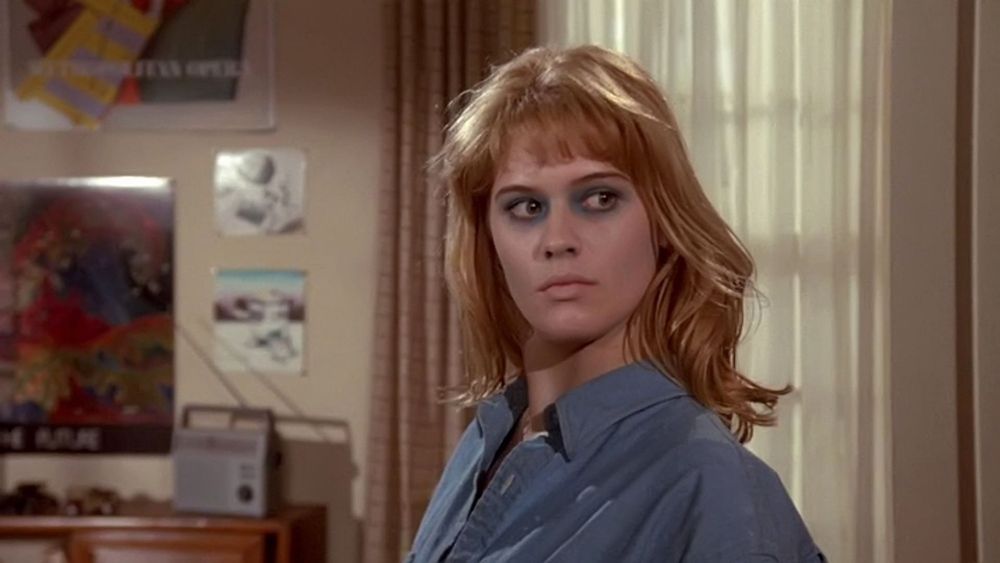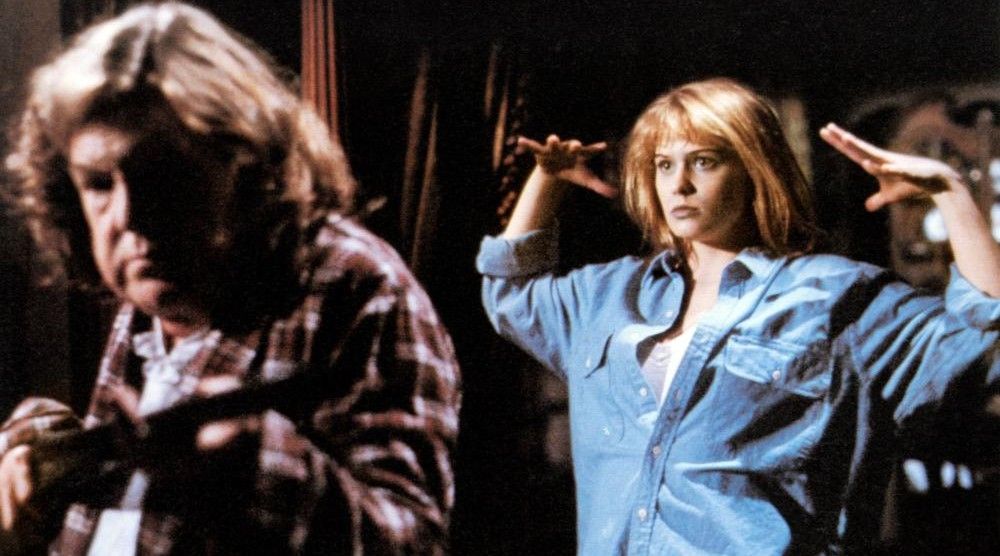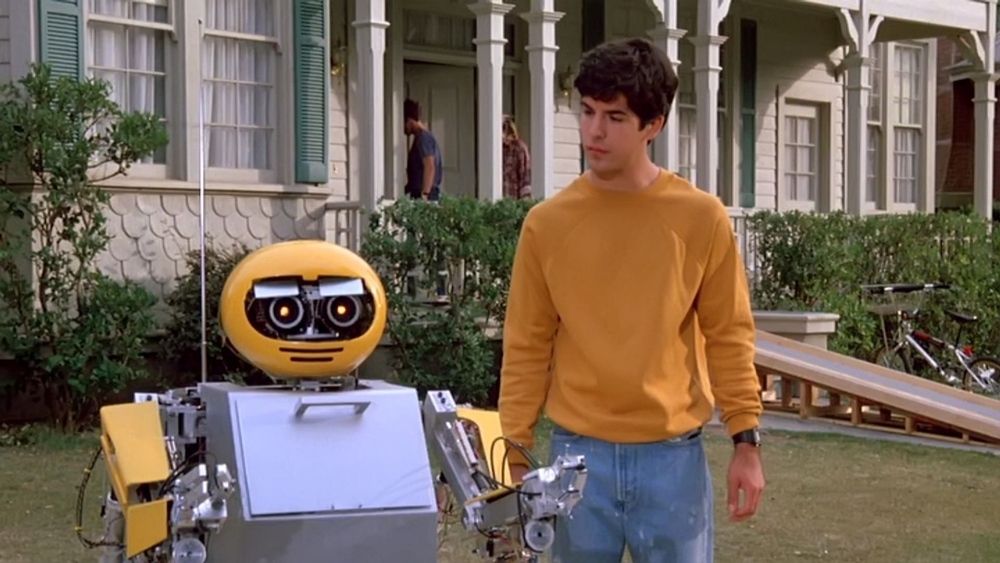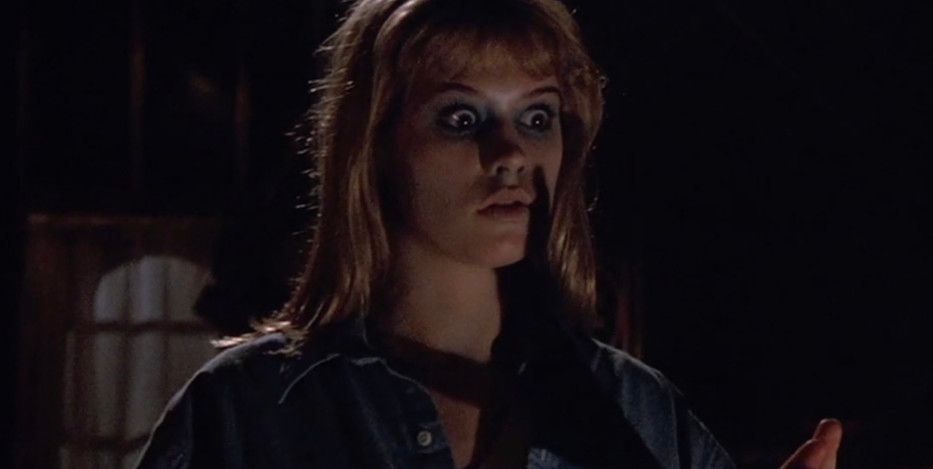Deadly Friend has a special place in my heart. No, it isn't because this unique film from visionary horror master Wes Craven was eerily prescient about the future of today. It's because the story of this film was told to me by Kristy Swanson's father. He was my seventh grade English teacher, and he was about as fun a teacher as you could ask for. After explaining that his daughter was the girl that Duckie (Jon Cryer) ends up with at the end of Pretty In Pink (that film had debuted the following weekend), Mr. Swanson proceeded to spend a few minutes telling us about his daughter's new film titled, Deadly Friend.
Made for $11 million dollars, Deadly Friend would bring in $9 million at the box office. In today's dollars that's a gross of about $20 million dollars. Something tells me that the people behind Deadly Friend don't look at it that way. Luckily, I was able to catch this film in the movie theater. Also remember, I was looking for it. The audience at the time probably wanted this film to deal with its lofty ideas a bit differently.
Deadly Friend is the story of Paul Conway (Matthew Labyorteaux from Little House on the Prairie). He and his mom move to a new town where Paul will be working at a University. His prized creation is a robot named BB. This bot clearly demonstrates Paul's brilliance. As he's getting acclimated he befriends Tom (Michael Sharrett) and Samantha (Swanson). Paul is instantly smitten with Samantha, and the fact that she has a very mean father doesn't bother him at all. Things take a turn when Sam's father kills her by pushing her down the stairs. Paul, in a very Frankenstein-like way, manages to bring Samantha back from the dead by implanting, essentially, BB's brain into hers. Unbeknownst to Paul, BB isn't as docile as he thinks. In fact, BB can be downright vicious. All of this is foreshadowed before BB's chip is put into Samantha. As you can guess, things become a horror show because the Samantha that Paul once knew is no longer the same person since being resurrected. Soon, a semi-killing spree starts as Samantha seeks to settle old scores with her father and others who have done Paul wrong.
I will admit that when I first watched Deadly Friend in 1986 I wasn't that excited about it. I have to believe that this was more due to youth, and not understanding the bigger ideas that this Wes Craven tale was espousing. Who know that 33 years later Deadly Friend would get so much right about the future of the world?
4 Deadly Friend was Google before Google.
There is an efficiency to the way that Samantha dispatches her victims that seems to predate the same efficiency in Google's algorithms. I am always marveling in how much Google gets right about me as a user. How it is able to anticipate what I want to search and find. Samantha, once she has the chip implanted in her brain, seems to show a lot of that in how she kills. Whether it is using her robotic strength to kill her father, a basketball to blow up her neighbors head, or how she throws a victim into a police car, Samantha reminds this wag of everybody's favorite search engine. Also, there's the way she she surveys and scans her victims. It is as if she is taking a picture so she can remember what it is she did right. The ultimate goal of this is that she will be even more efficient during future kills. It also seems to bespeak how Google serves us ads on things we search. With every kill Samantha gets better and better. With every search those pesky algorithms serve us up ads that remind of us of things we want (or think we need). This is precisely the way Samantha operates. She become more efficient with every kill. She allows her victims to think they are getting what they want. Like Google and it's products like YouTube, her victims become comfortable with her. It is at that moment that Samantha turns the tables. This is akin to YouTube changing it's terms of use, denying monetization to creators, or Google letting us know (after years of use) how nefariously it harvests our data. It might seem like a leap to liken Samantha to the worlds best known search engine, but when you see the completist nature of how she works the leap isn't that hard to make.
3 Deadly Friend foreshadowed the wearables industry.
Perhaps this is what Deadly Friend got the most right in its forecasting of the future. Today you can buy bracelets, shirts, pants, shorts and socks that are uniquely designed to grab our data. Deadly Friend may have taken things to morbid heights in the way the chip was implanted. It may have raised eyebrows at what the merging of human beings and microchips wrought (more on that below), but one has to imagine that had BB/Samantha worked out this could've made Deadly Friend an even more interesting sci-fi tale. Imagine the data and physiology Paul would've been able to glean had BB's innards not turned Samantha into a killing machine. We would've been able to chart pulse, heart rate and human endurance, in ways that we can only dream about in 2019. Even today, the wearables are just that, we wear them on our bodies. Paul had a complete insiders of view of the human body. What he would've been able to get out of Samantha would've been like nothing we had seen in movies or reality. The merging of human with machine was in perfect order. Sadly, the human hand in all this ultimately created a beast that even Paul wasn't safe from. This seems to be a clear warning to people regarding their reliance on such devices. On an even bigger scale, it seems to call into question the safety of having computers on us like our phones. Sure, they make us more productive and can track important health information. Just like Samantha was to provide that information and companionship for Paul. However, like many things in this realm, the risk was far greater than any perceived reward.
2 Deadly Friend showcased the threat of automation.
Deadly Friend would showcase what was possible with Artificial Intelligence used by robots. At the same time it would also serve as a cautionary tale for the today's world. One of the biggest fears people have about artificial intelligence (which is what BB's chip being implanted in Samantha's brain was), is how the bots we are entrusting with our information and jobs might ultimately come to see us as the enemy. This is a big thing in many movies and science fiction stories. Initially, in Deadly Friend, BB gets Paul celebrated because of the possibilities of what robotics offers. However, when Paul really needs it, much like when we need bots to go above and beyond simply doing a job, they always fail us. Whether it's a plane that gets its wires crossed, or a self-driving car that can't negotiate things beyond its algorithms, all we are really dealing with are machines. Paul innately knows this which is why, no matter what horrors Samantha may bring to his neighborhood, he can't see it that way. He is blinded by love in much the the same way that scientists are blinded by what robots can and can't do. This isn't an anti-automation rant. Human beings will always be needed. However, like the ubiquitous smart phones we now carry around in our pockets, robots like BB (and by proxy Samantha) are going to become even more ingrained in our lives. Look at how they're now in every school. Not as a hub that students share but every student has their own computer or tablet. In Deadly Friend Paul wanted BB to be everywhere. He wanted BB to be everything to everyone. Then he met Samantha and his love shifted. Samantha died and Paul needed both BB and Samantha to exist. Crossing ethical lines didn't matter and that's probably why automation scares so many people.
1 Deadly Friend raised present day ethical questions regarding the RFID Chip.
Is there a subject that is more controversial with people than the Radio-frequency Identification (RFID) Chip. You know that chip, the one that's going to be implanted in all of us so that the government can glean all this information and take over our lives? If you don't accept this chip you're going to be imprisoned or worse. (Which, when you think about it, don't our Smartphones pretty much already do this?) Then there are others who love the idea of having a chip implanted. They see it as away to increase efficiency on their health. They love the way it will actually integrate a person (literally) into all of their smart devices. No longer will we we need to carry around any information about ourselves or our bank accounts. Simply walking through a store will solve that problem. The whole crux of Deadly Friend is the ethics of what Paul does to keep Samantha alive. Like the doctor in China that recently got in trouble for altering the genes of babies or those garage scientists using CRISPR, that desire to push science for the greater good of humanity shows that such benefits, like everything, are two fold. In Deadly Friend, Paul really wants to push robotics to the edge of a new frontier. He's so blinded by this (and his love of Samantha) that he can't help himself when it comes to saving her life and pausing his scientific ethics. One has to believe that scientists today that are pro-RFID chip, have also weighed the pros and cons of these very arguments. However, Deadly Friend is merely a movie but it shows that today's scientists are actually capable of doing what Paul basically does.
Deadly Friend was a small film with big ideas. It didn't make a lot of money although Kristy Swanson would go on to have more fame with Buffy the Vampire Slayer and the movies Hot Shots! and Higher Learning. The ideas and futuristic potential of this movie are what make it memorable today. Like the book, "The Road Ahead" by Bill Gates, it showed us a glimpse of the future. Yes, it was campy and much of the effects, both futuristic and otherwise, weren't done very well.
Ultimately, none of that matters because, like a lot of experiments done by garage scientists, ideas are formed that ultimately take shape in a larger form somewhere else. Given that Wes Craven crafted this tale, from a screenplay by Bruce Joel Rubin (Ghost, Jacob's Ladder and Brainstorm), is it any surprise that these particular "garage scientists" created something so prescient in today's connected world?

![Deadly Friend: How a Forgotten 80s Film Foretold the Future in 2019 [Rewind]](https://static1.moviewebimages.com/wordpress/wp-content/uploads/article/HaZLATSKgcmtiqJv6tfSd4Oo9HpJ0w.jpg)



